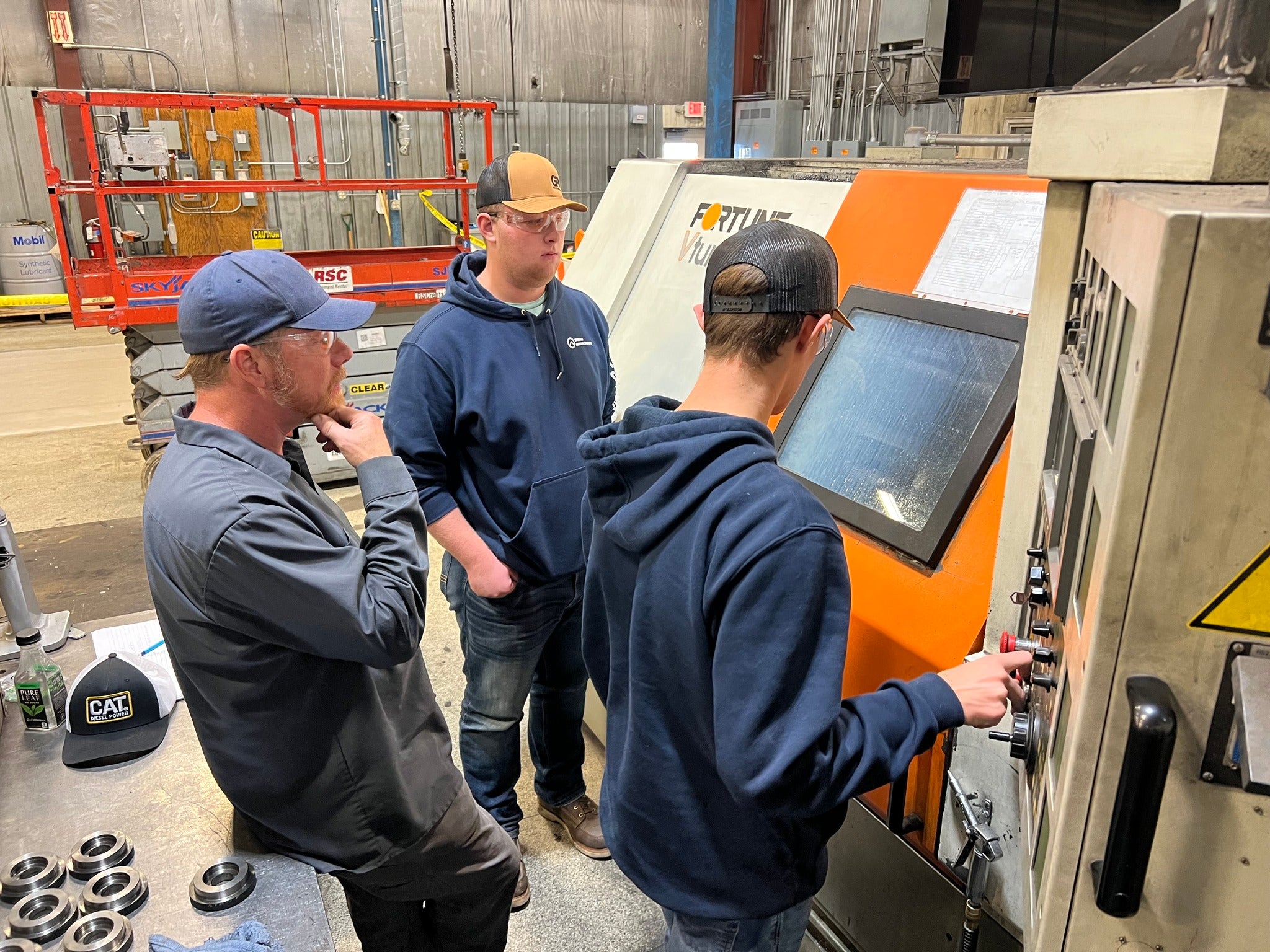College students are returning to campuses across the state this week. But more and more college students aren’t those you’ll find living in dorms, instead they’re working adults looking to improve their skills and career prospects.
The University of Wisconsin Flexible Option launched by UW-Extension is looking to reach these non-traditional students through the Flex programs. The more than 780 students enrolled so far never have to set foot on a campus or log on for a scheduled lecture.
Your Degree On Your Schedule
News with a little more humanity
WPR’s “Wisconsin Today” newsletter keeps you connected to the state you love without feeling overwhelmed. No paywall. No agenda. No corporate filter.
Carla Lundeen is one of those 780-plus students. In 2014, she already had an associate degree in nursing and a bachelor’s degree in another field, but she didn’t want her career to stall.
“I was able to do the job that I have with an associate degree. However, most nursing positions and careers in nursing are looking for people to have a bachelor’s degree,” she said.
Lundeen took notice when UW-Extension launched an online competency-based nursing degree that January. With a daughter away at college and a son in high school, Lundeen decided it was her chance.
“I work full-time, I was able to still work full-time,” she said. “I also have a family, so I was able to be involved in those activities, and I could schedule my study time and any competency evaluations I had to do at times that worked for me.”
Lundeen’s husband and son knew Monday through Thursday evenings from about 8 to 10 or 11 p.m. was her time to study and do schoolwork. Friday nights were reserved for family — and her son’s high school football games.
Nursing was one of four competency-based degree programs UW-Extension launched in 2014. The school is launching a fifth program, a business degree, later this year. They call the programs Flex Options because they’re made up of online, project-based modules — called competencies — students work through at their own pace instead of going to traditional classes. There are no lectures and even no textbooks.
Completing a competency can mean taking a test, writing a paper or carrying out a project at work.
“My capstone project was to come up with an opportunity for organization-wide improvement.” Lundeen said. “So I developed a program within our organization on smoking cessation and how to provide better resources and options for the members that we work with in pursuing smoke cessation.”
Now, Lundeen is one of 26 Flex students to earn a degree so far. She also moved into a management position with her company while completing her degree, an option she said she wouldn’t have thought to pursue if it weren’t for the Flex program.
Competency-Based Education Opportunities On The Rise
Twenty-six might be a small number, but UW-Extension Provost Aaron Brower said that’s more bachelor’s degrees than a traditional brick-and-mortar college with 800 students could churn out in two and a half years. And, it’s just a sign of what’s possible once they lift enrollment caps on the programs.
“Our goal will be to hit several thousand once we have all our systems working,” Brower said. “Just in Wisconsin alone, there are literally tens of thousands of students that are potential students here.”
Whether the Flex programs can serve those students is key.
Robert Kelchen is a Seton Hall professor of higher education who follows competency-based education. He said programs like these are growing. Partially because they can save students money. But many think they could also cut costs and even make money for schools.
“And UW has an advantage being one of the first big players in this field that they might be able to get not only a good chunk of the Wisconsin market, but potentially to compete with some of the other big name institutions that are offering competency-based education,” Kelchen said.
One hurdle to growing competency-based programs quickly is that unlike UW’s programs, many don’t qualify for the federal student aid program, limiting enrollment to those who can foot the bill themselves, or whose employers are willing to pay for programs that don’t have a federal seal of approval.
Right now federal aid is distributed based on course credit hours, or time spent in the classroom. The Flex programs are part of the U.S. Department of Education pilot program testing unlinking aid from seat time.
Academic Success Coaches Link Students To Resources
Creating self-paced programs for thousands of students also presents challenges when the schoolwork requires moving out into the real world.
Lundeen said she was responsible for scheduling her own clinical work to complete the degree. Something she said she could have struggled to do if she hadn’t had the buy-in of her employer and the option to complete her clinical work in another department in her company. She added that as one of the early enrollees to the program, she had seen support and systems improve as she moved through the competencies.
Getting thousands of students into the programs also means professors can’t interact with students one-on-one. Provost Brower said one change made to better connect students with the resources they need to complete their degrees was offering academic success coaches.
An academic success coach provides anything from traditional academic advisor support, to tutoring to connecting students to faculty members and other counseling services, Brower said.
With that support, UW-Rock County chemistry professor Kim Kostka said Flex students who have to master each competency before moving on can gain a better understanding of course material than some of the students she teaches in person. She worked on developing some of the competencies. But, she acknowledged there are things that don’t translate easily.
“We had to think about teamwork and peer-to-peer interactions creatively for Flexible Options because that is an important learning outcome of the college experience that’s difficult to replicate in an online environment,” Kostka said.
Rethinking The College Experience
It might be time to rethink what constitutes a college experience. In Wisconsin, about 47 percent of working-age adults have some credential beyond a high school diploma. By 2020, about 65 percent of jobs are expected to require post-high school training. Brower said colleges and universities across Wisconsin and the nation don’t have the physical space to meet that need.
“To increase our graduation rates by 20 percent, we would need 1.2 million more graduates and you simply can’t get there with the 350,000 seats that exist. So you need programs like this and high quality programs so that degree means something,” said Brower, who gets weekly calls from higher education leaders across the country exploring or starting competency-based programs of their own.
Wisconsin Public Radio, © Copyright 2025, Board of Regents of the University of Wisconsin System and Wisconsin Educational Communications Board.







